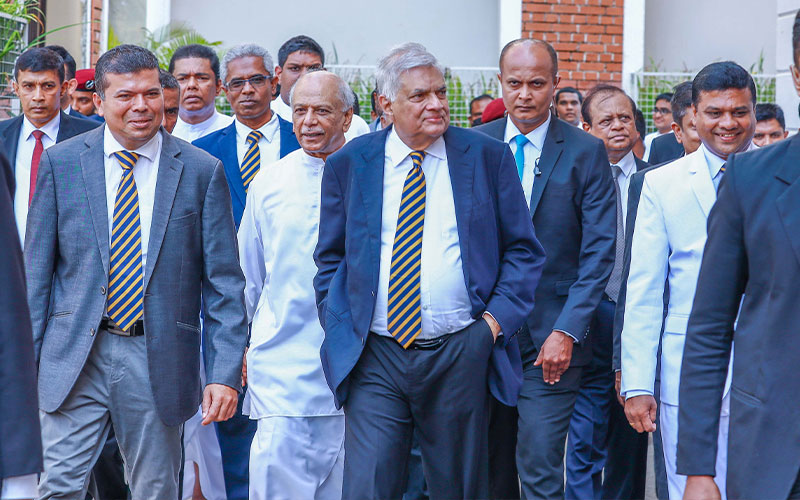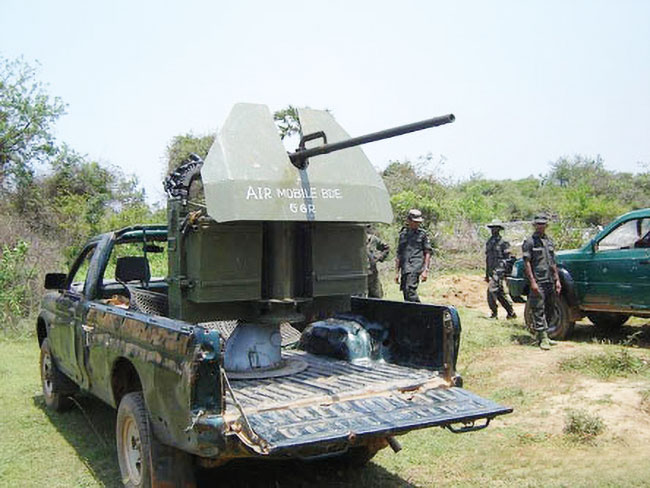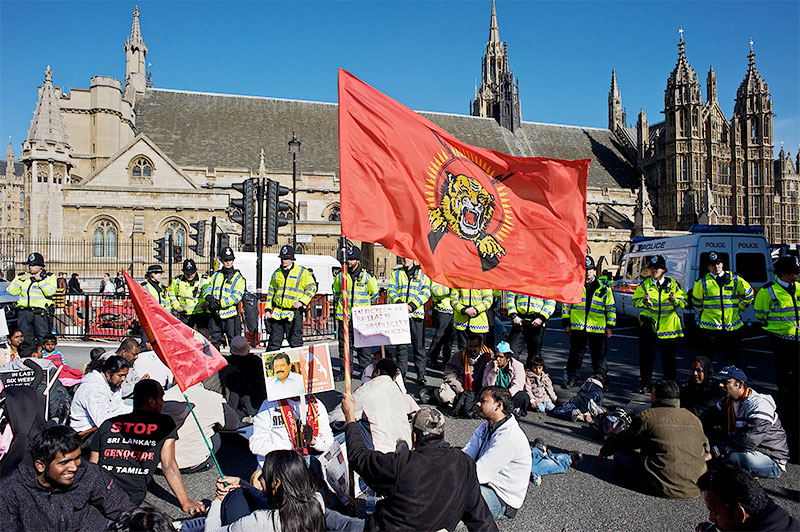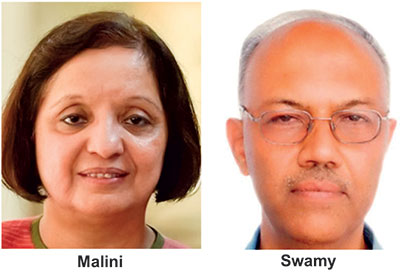SPECIAL REPORT : Part 495
Close on the heels of humiliating battlefield defeats in the Jaffna peninsula, President Chandrika Bandaranaike Kumaratunga declared her intention to establish full diplomatic ties with Israel. Sri Lanka opened a diplomatic mission in Tel Aviv in Oct 2000 after having established full diplomatic ties with the Jewish State in May 2000, just a few weeks after losing Elephant Pass. Kumaratunga made her move after India refused to throw its military weight behind Sri Lanka’s bid to bring the war to a successful end in the Jaffna peninsula. Sri Lanka closed down the Israeli Interest Section in 1989.The Kumaratunga administration even subjected the print media reportage of Indo-Lanka relations pertaining to defence matters to censorship. In the wake of the Elephant Pass debacle and repeated assaults on the retreating SLA, the Kumaratunga government at one point feared the possibility of having to abandon the Jaffna peninsula. But, the SLA courageously fought back to halt the enemy advance and then made modest territorial gains. But, the politically motivated change of Northern and Jaffna Commands appeared to have led to Operation Agni Kheela, nothing but a catastrophe that caused quite significant damage to the SLA offensive capacity.
By Shamindra Ferdinando
President Ranil Wickremesinghe recently referred to the worst ever battlefield defeat suffered by the Sri Lanka Army (SLA) during the war against the Liberation Tigers of Tamil Eelam (LTTE).
Addressing a distinguished gathering at his alma mater Royal College, Colombo 07, on Oct 27, the UNP leader, who is also the Commander-in-Chief of the Armed Forces, recalled the supreme sacrifice made by two Royalists, namely Brigadier Percy Fernando and Colonel Bhathiya Jayatilleke during the chaotic withdrawal from the Elephant Pass (EP) base or Aanai Iravu, as it is known in Tamil, in late April 2000.
The strategically located EP base had never been overrun and was widely believed to be impregnable until the LTTE executed a meticulously planned operation, having disrupted the overland supply route. The EP calamity took place during Eelam War III when Chandrika Bandaranaike Kumaratunga served as the President (April 1995- Nov 2005).
At the time of the EP debacle, Wickremesinghe served as the Opposition Leader, having received the UNP leadership in 1994 after his party was voted out following a17-year long reign. During the UNP reign, the SLA experienced its worst setback at Pooneryn on the Vanni mainland in early Nov. 1993 that led to the hasty retirement of then Army Commander Cecil Waidyaratne.
Percy Fernando, Deputy General Officer Commanding (GoC) of the fully fledged 54 Division, and Bhathiya Jayatilleke, Commander of 54.1 Brigade, were promoted to the rank of Major General and Brigadier, posthumously. The SLA couldn’t have held the EP after the LTTE captured their sole source of drinking water, the wells at Iyakachchi, and immediate withdrawal became inevitable. Both top officers and many of their men suffered from severe dehydration and not so much from enemy fire. Jayatillake was also the son-in-law of then JOC Head Lt. Gen Hamilton Wanasinghe.
Paying a glowing tribute to the former Royalists, the UNP leader declared that in spite of the grave risk to their lives they didn’t flee theElephant Pass base but stayed with the withdrawing troops. The old Royalist said that they (Royalists) never fled under any circumstances. Wickremesinghe pointed out how he and Premier Dinesh Gunawardena faced daunting political challenges as Royalists.
Perhaps, the Elephant Pass debacle should be examined also taking into consideration the recent death of General Lionel Balagalle, one-time Army Commander who also served in Jaffna before the EP calamity. Widely regarded as the father of the Directorate of Military Intelligence (DMI) Balagalle had been the Chief of Staff at the time of the debilitating EP setback and was involved in failed attempts to thwart LTTE offensive action therein.
The SLA first deployed a platoon at EP in the early ’80s. In 1990, EP became the home for a battalion of troops and support units. A decade later, the SLA had over a Division plus troops in the EP sector but couldn’t repulse the LTTE offensive.
The EP strip was of strategic importance to both the SLA and the LTTE as it linked the Vanni mainland with the Jaffna peninsula. Both the Jaffna-Kandy A9 road and the railway line to Jaffna run through EP, and the narrow strip of land was in a sense the gateway to Jaffna. The EP debacle should be also examined keeping in mind, that at the time, the SLA held the Jaffna peninsula, comprising Waligamam, Thennamaratchchy and Vadamaratchchy areas.
Brig. Fernando had been walking with a group of soldiers moving northwards, away from Elephant Pass, when he was shot dead by a sniper, whereas Jayatilleke died from dehydration despite being admitted to the Palaly military hospital. Then Maj. Janaka Ritigahapola, the Commanding Officer of the Second Battalion of the Commando Regiment, who had been walking ahead of the Deputy Division Commander, later organized a night mission to recover the senior officer’s body.
Now retired, Lt. Col. Ritigahapola told the writer, last weekend, how the Deputy Division Commander’s battle buddy accompanied a group of commandos who volunteered to walk back to the spot where the Brigadier was shot through the back of his head. “We really do now know he was sniped,” Ritigahapola said, adding that the senior officer’s sidearm was brought back by his battle buddy. According to Ritigahapola, like him, Brig. Fernando had returned to EP within 48 hours before having attended the funeral of a serviceman who succumbed to injuries suffered at EP.
Otherwise the SLA would have had to depend on the International Committee of the Red Cross (ICRC) to secure the senior officer’s body. The LTTE returned many bodies of officers and men attached to the 54 Division through the ICRC as the situation deteriorated. The writer used to contact the then ICRC spokesperson Harasha Gunawardene regularly to receive updates as the LTTE pressed ahead with its offensive in the Jaffna peninsula. According to Gunawardene, as many as 200 bodies, or more, may have been transferred across the frontline at that time.
The LTTE directed phase four of large scale multi-pronged operation Ceaseless Waves (Oyatha Alaikal) at EP. That was meant to overrun the 54 Division plus troops deployed in the Elephant Pass sector. Phase I and II of Ceaseless Waves defeated the SLA in the Vanni and phase III, carried out beginning the second week of Dec. 1999, severely weakened the SLA position in the north, thereby facilitating the fourth phase. The first Unceasing Waves destroyed the isolated the Mullaithivu base, home to two infantry battalions and support units in July 1996. In terms of officers and men killed, Mullaithivu was the worst single battlefield loss.
The failure on the part of the SLA to thwart the LTTE offensive on the EP base is still a mystery. At that time, the fully equipped 54 Division, headquartered at Elephant Pass, had Division plus troops. Brigadier K.B. Egodawela, who had served as the GoC of the ill-fated Division, was among those who managed to escape the marauding LTTE units. The Division Commander had been among the sections of 54 Division which succeeded in evading the LTTE units deployed to block escape routes.
Undoubtedly, the loss of EP was the worst debacle the LTTE inflicted on the SLA. Close on the heels of their success at EP, the LTTE brought in all available units to press ahead with its assault on Jaffna. Fortunately, the SLA managed to repulse a series of determined LTTE attempts to advance on Jaffna town. Had the LTTE succeeded in its bloody efforts, Jaffna, regained in Dec. 1995 by Operation Riviresa, too, would have been lost. Had that happened, both the Palaly airbase and Kankesanthurai harbour would have been vulnerable to the LTTE offensive and the war could have taken a dangerous turn.
Unprecedented crisis
At the time the EP base fell, the then President Chandrika Bandaranaike Kumaratunga had been in the UK. Therefore, the decision to order the 54 Division to withdraw from EP was taken at a meeting of the National Security Council (NSC), chaired by the then Deputy Defence Minister, the late Anuruddha Ratwatte on the night of April 19, 2000. Amidst Opposition criticism of the President’s absence, the Presidential Secretariat declared that Mrs. Kumaratunga was abroad to receive medical treatment.
As pressure mounted on the SLA to take a swift decision on the EP base, the then Army Chief Lt. Gen. Srilal Weerasooriya, risked his life to visit the base, under siege, for consultations with Division Commander Brig. Egodawela and other senior officers. Lt. Gen. Weerasooriya had flown to Palaly airbase on the morning of April 19 and from there moved overland to the EP in two light vehicles and returned, following consultations, to Palaly before taking a flight to Ratmalana.
Gen. Weerasooriya had briefed the NSC regarding the developing situation and the need to act swiftly to save the lives of officers and men as the combined security forces weren’t in a position to defend the EP base. The Army Chief has pushed for immediate withdrawal as the combined forces couldn’t intervene successfully. Responding to The Island query over the last weekend, the former Army Chief emphasized that he never asked for a ceasefire but underscored the urgent need to evacuate the defence complex if the enemy onslaught couldn’t be defeated.
The PA leadership opposed a ceasefire as such a move would undermine the government. Therefore, Deputy Defence Minister Ratwatte had given the go ahead for Lt. Gen. Weerasooriya to take necessary actions.
Over the Army communications setup, instructions had been given to Brig. Egodawela to carry out the withdrawal on April 22, 2000. By the time instructions were issued, some sections of the 54 Division had already shifted positions, the former Army Chief said, recalling Brig. Fernando opted to walk with his men though he had an opportunity to get on board an Armoured Personnel Carrier (APC) or some other vehicle.
The writer was among a selected group of journalists invited to cover a hastily arranged media briefing at SLA headquarters on the night of April 24, 2000.
Lt. Gen. Weerasooriya and Maj. Gen. Balagalle explained the measures that were being taken at that time to consolidate the government position in Jaffna, following their pullout from EP. They were flanked by Air Force Commander Air Vice Marshal Jayalath Weerakkody, Navy Commander Vice Admiral Cecil Tissera and Brigadier Palitha Fernando, the then military spokesman.
A grim-faced Army Chief declared that a re-thinking of strategy was required as the SLA consolidated its positions in the general area Soranpattu, northwest of Iyakachchi.
Against the backdrop of the developing crisis in Jaffna, the Army Chief dispatched Maj. Gen. Janaka Perera and Maj. Gen. Sarath Fonseka to the Jaffna peninsula. Maj. Gen. Perera received the appointment as Overall Operations Commander (OOC) for the entire northern theater while Maj. Gen. Fonseka assumed duties as Security Forces Commander, Jaffna.
Lt. Gen. Weerasooriya stressed the need to rapidly enhance the firepower to meet the emerging threat. The Army Chief also underscored the urgent need to bolster the fighting units in line with overall defence policy. He declined to comment on the enactment of laws to introduce hitherto unprecedented step of conscription to meet the serious manpower shortage experienced by the SLA.
Lt. Gen. Weerasooriya said: “When a war is on, like ammunition we need men.” Commenting on the need to strengthen the SLA, the Army Chief said: “We would like to further increase our firepower and re-equip.”
It would be pertinent to mention that the PA government subjected the reportage on the conflict to military censorship. The government felt uncomfortable that battlefield losses could erode its popularity among the public, therefore there was no alternative to censorship. The media raised the issue with the Army. Lt. Gen. Weerasooriya, who emphatically denied ever requesting the government to impose censorship. Brigadier Palitha Fernando strongly opposed the media taking up the contentious issue of censorship at this particular media briefing.
The LTTE carried out ‘Unceasing Waves’ during the late Lt. Gen. Rohan Daluwatte’s tenure as the Army Commander (May 1, 1996-Dec. 15, 1998) and his successor Lt. Gen. Weerasooriya (Dec. 16, 1998-Aug. 24, 2000). Lionel Balagalle succeeded Weerasooriya on Aug. 25, 2000 and served as the Commander till June 30, 2004, during a politically turbulent period as the country headed for Eelam War IV.
Playing politics at the SLA’s expense
Regardless of the consequences, the PA and the UNP clashed over the EP debacle. Having returned home from abroad, Mrs Kumaratunga immediately went on the offensive. Kumaratunga accused the UNP of seeking political advantage over what she called a temporary setback suffered by the SLA in the Jaffna peninsula. She flayed the UNP for asserting the withdrawal from EP as a major military debacle.
What the PA really feared was the emerging threat on the Palaly-Kankesanthurai joint military complex in case the SLA had to abandon Jaffna following the EP debacle. The PA sought some sort of consensus with the UNP regarding the developments in the Jaffna peninsula whereas the UNP parliamentary group felt the government had suffered an irreversible setback and the situation could further deteriorate in case the SLA position in Jaffna town and its suburbs became untenable.
The LTTE launched the offensive against the EP base on Dec. 11, 1999, as the country was heading for presidential election on Dec. 21, 1999. On Dec. 18, 1999, the LTTE made an abortive bid to assassinate Kumaratunga at the final presidential election rally. In the run-up to the previous presidential election held on Nov. 09, 1994, the LTTE assassinated UNP candidate Gamini Dissanayake in late Oct. 1994.
In the Jaffna theatre post-EP debacle, the LTTE pressed ahead with offensive operations and the SLA struggled to defend its positions. The UNP demanded a special debate on the situation as the SLA vacated Ittavil, Pulopullai and Pallai. The PA sustained censorship to deprive the public of their right to know what was going on in the north. The ICRC continued to transfer bodies of SLA personnel found in areas under LTTE control. The PA and UNP shamelessly played politics with the Jaffna situation regardless of the fact that the then the entire Vanni theatre had already fallen into the hands of the LTTE.
However, the SLA with a range of new arms, ammunition and equipment acquired in the wake of the EP crisis, thwarted the LTTE offensive and stabilized the situation. As the SLA gradually brought the situation under control, the PA removed both Majors General Janaka Perera and Sarath Fonseka. President Kumaratunga scrapped the post of OOC while Fonseka was replaced by Brig. Anton Wijendra. The PA appeared to have felt confident that the LTTE no longer posed a threat on Jaffna therefore the services of the two officers, who led the defence and also the counter attack, was no longer required. Maj.Gen. Perera received the appointment as Chief of Staff whereas Fonseka moved to Vanni. What really made the PA remove both Perera and Fonseka?
Maj. Gen. Wijendra consolidated the SLA positions in the Jaffna peninsula before the launch of Operation Agni Kheela (Rod of Fire) in early 2001 that was meant to regain the area lost to the LTTE in the previous year. The offensive went awry. The LTTE inflicted heavy losses on the SLA. That was the last large-scale SLA offensive before the signing of a Ceasefire Agreement in Feb. 2002 following the return of the UNP to power at the Dec 5, 2001, general election.




 UK Premier Rishi Sunak pledged unequivocal support for Israel before flying to the Jewish State where he reiterated British commitment. Sunak followed US President Joe Biden, the first foreign leader to visit Tel Aviv amidst indiscriminate attacks on Gaza. At the time this comment was written on Oct 22, the international media reported the possibility of French President Emmanuel Macron also undertaking a visit to Tel Aviv. Canada, too, declared support for Israel. Their declaration of support for Israel didn’t surprise anyone.
UK Premier Rishi Sunak pledged unequivocal support for Israel before flying to the Jewish State where he reiterated British commitment. Sunak followed US President Joe Biden, the first foreign leader to visit Tel Aviv amidst indiscriminate attacks on Gaza. At the time this comment was written on Oct 22, the international media reported the possibility of French President Emmanuel Macron also undertaking a visit to Tel Aviv. Canada, too, declared support for Israel. Their declaration of support for Israel didn’t surprise anyone.